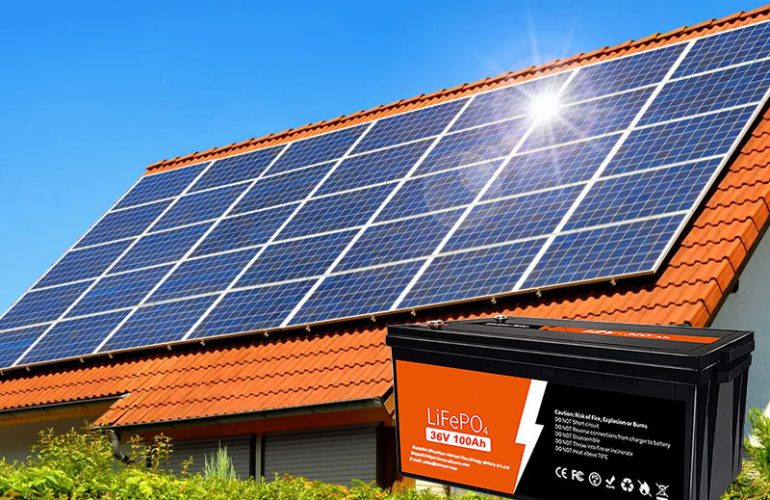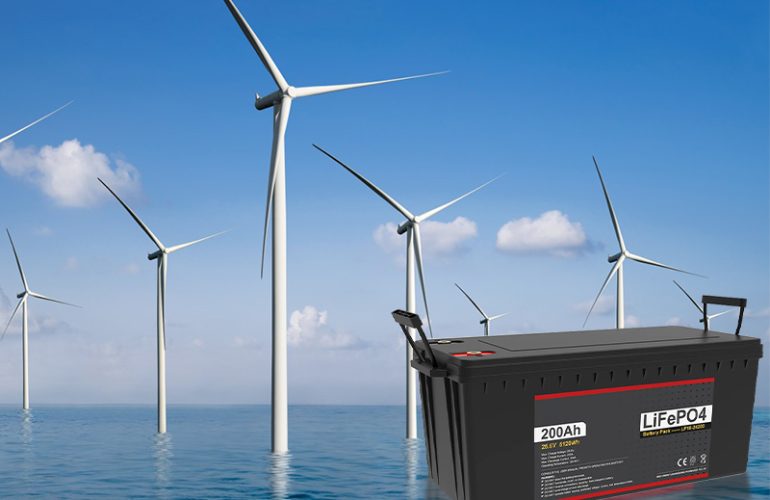Built for use as house battery in RVs, Campers, Van builds, or any vehicle where you are camping or working off grid in comfort, Flykol Lithium battery will give you twice the run time as your AGM or lead acid house battery while lasting 4x longer, providing exceptional lifetime value. Plus Flykol Lithium’s signature LiFePO4 technology is the best chemistry for use with solar panels, will perform at temperatures down to -20 F, and weighs half as much as your dad’s SLA, providing superior performance while shedding pounds off your rig.
RV lithium battery have revolutionized the way we power recreational vehicles (RVs) and offer numerous advantages over traditional lead-acid battery. In this comprehensive guide, we will explore the features, applications, advantages, maintenance, battery management systems, safety considerations, purchasing guide, and frequently asked questions related to RV lithium battery.
Best Lithium RV Battery:
-
Sale!

12V 150Ah Lithium Battery
$689.00Original price was: $689.00.$356.00Current price is: $356.00. Enquiry -
Sale!
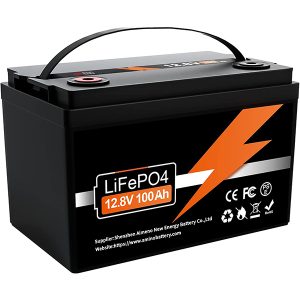
12V 100Ah Lithium Battery
$235.00Original price was: $235.00.$229.00Current price is: $229.00. Enquiry -
Sale!
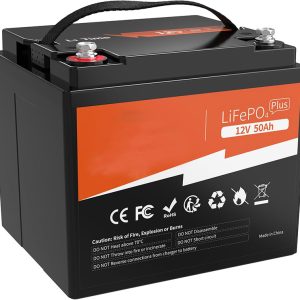
12V 50Ah Deep Cycle Lithium Battery
$335.00Original price was: $335.00.$298.00Current price is: $298.00. Enquiry -
Sale!
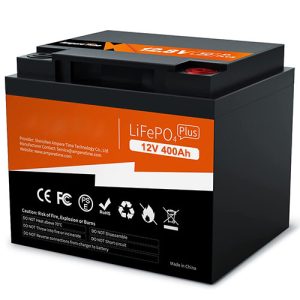
12V 400AH Deep Cycle Lithium ion Battery
$989.00Original price was: $989.00.$958.00Current price is: $958.00. Enquiry -
Sale!
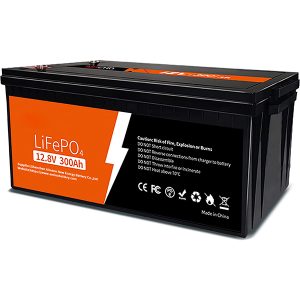
12V 300Ah Lithium ion Battery
$899.00Original price was: $899.00.$599.00Current price is: $599.00. Enquiry -
Sale!
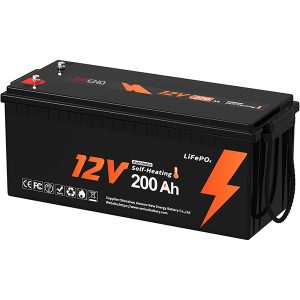
12v 200ah lithium ion battery
$235.00Original price was: $235.00.$198.00Current price is: $198.00. Enquiry
Lithium RV battery features:
- Environmentally Friendly
- Lightweight And Compact
- High Energy Density
- Low Maintenance
- Long Lifespan
- Low Self-discharge Rate
What Is a Lithium RV Battery?
A lithium RV battery is a rechargeable 12V battery that uses different chemistry than a standard lead-acid 12V battery. Many RVers upgrade to these, especially those using solar power to charge their house battery.Lithium is more environmentally friendly than lead-acid. Many of the companies producing them also have a strong focus on sustainability.
Why Do You Need A Special RV Battery?
As you know, RVs are more than your typical automobile. They come equipped with bathrooms, kitchens, televisions, and many other “home” amenities. That means that a standard auto battery won’t cut it with a motorhome. Instead, you’ll need a battery that can provide long-lasting power and one that can support all your motorhome’s electrical needs.
Types of RV battery
The RV battery is the power source for the systems that control the taillights, interior loads, electric wheel brakes, marker lights and all accessories on the dashboard.
RV battery are typically provide 12 volts DC to all components of the trailer. Almost all components in the trailer run on 12 volts. Shore power is typically 120-volt alternating current (AC) power for charging the RV battery. The electricity is convert to 12 volts, which can generate power for the appliances such as refrigerators, microwaves, etc.
Value Regulated Lead Acid (VRLA) battery.
This type of electrolyte is suspended in a GEL or fiberglass mat. When gel acid is used, the battery is called a GEL battery.
Absorbed Glass Mat (AGM) battery
A fiber mat is sandwiched between the plates of this battery, which is more expensive than a regular deep-cycle battery. You can charge them like lead-acid battery, but they’re leak-proof, can’t freeze at low temperatures, and are mostly maintenance-free.
Lithium-ion battery
This type of battery used to lack deep-cycle applications, but more is now being produced for this purpose. Lithium-ion battery have an internal management system for maximum safety. they provide more power than many other types of battery and they are lighter and more compact than lead-acid battery. Also 4 times lifespan than normal lead acid battery.
What Should You Look for in an RV battery?
There are several factors to consider when selecting an RV battery:
Composition of the RV battery
RV battery come in three types: lead-acid, lithium-ion, and absorbed glass mats (AGM). Lead-acid battery are the most common type and come in two subtypes: flooded and sealed. Flooded battery require regular maintenance, while sealed battery are maintenance-free. Lithium-ion battery have a longer lifespan than lead-acid battery but have a higher price tag. AGM battery are newer and more expensive lead-acid battery requiring minimal maintenance.
Mechanism of an RV battery
Understanding the mechanism of your RV battery is crucial. A deep-cycle battery is designed to provide a steady flow of power over an extended period, making it ideal for use in an RV. On the other hand, a starter battery provides a short burst of power to start the engine and is unsuitable for extended use.
Battery Capacity and Voltage
The capacity of an RV battery is measured in ampere-hours (Ah). It determines how long the battery will last before needing recharging. The voltage of an RV battery can be either 12 V or 6 V. A higher voltage will allow you to store more energy in the battery.
Battery Durability and Lifespan
When choosing an RV battery, consider its durability and lifespan. Lithium-ion battery have a longer lifespan than lead-acid battery but have a higher price tag. AGM battery are also known for their durability and long lifespan.
Battery Compatibility with Other RV Components
Ensure your battery is compatible with other RV components, such as solar panels and inverters. Some battery may require additional equipment for compatibility.
Replacement Cost of an RV Battery
Consider the cost of replacing your deep cycle rv battery when selecting a new one. While lithium-ion battery are more expensive upfront, they may be more cost-effective in the long run due to their longevity.
Charging and recharging
Consider how easy it is to charge and recharge your RV battery. Some solar panels can charge battery, while others require external charging sources. Look for a battery that charges quickly and efficiently.
Technology for an RV Battery
Newer technology can enhance the performance of an lithium rv battery. Look for features like Bluetooth connectivity, which allows you to monitor your battery’s performance remotely. Some battery also have built-in surge protection and thermal cutoff for added safety.
Eco-friendly RV battery
Consider eco-friendly options, such as solar-powered battery, which can help reduce your carbon footprint. These battery can be charged using solar panels and are a great option for those who plan to camp off-grid.
Solar Charging for RV battery
If you plan on boondocking or camping off-grid, consider investing in a solar panel kit that can power your RV battery. Solar charging is an efficient and eco-friendly way to keep your battery charged while on the road.
Safety Considerations
When selecting an RV battery, consider safety features like built-in surge protection and thermal cutoff. These features can protect against electrical hazards and ensure the safe operation of your RV’s battery.
Warranty and After-Sales Service
Ensure the battery you choose has a warranty and reliable after-sales service. A good warranty can provide peace of mind and protect your investment in case of defects or failures.
Overall user experience
Consider user reviews and ratings when selecting a deep-cycle RV battery. The experiences of other RV enthusiasts can provide valuable insights into the performance and reliability of different battery. Look for a battery with positive user feedback and a track record of reliable performance.
Maintenance of an RV Battery
Proper maintenance is crucial to ensuring the longevity and performance of your RV battery. Here are some tips for maintaining your RV battery:
- Keep your battery charged. When not in use, make sure your battery remains charged. A fully discharged battery can suffer damage and reduce its lifespan.
- Regularly check the water levels in flooded battery. If you have a flooded lead-acid battery, check the water levels every few months and top them off as needed.
- Clean the terminals and cables regularly. Dirty terminals and cables can reduce the performance of your battery. Use a wire brush and baking soda to clean them regularly.
- Store your battery in a cool, dry place when not in use. Extreme temperatures can damage your battery. Store it in a cool, dry location, away from direct sunlight and moisture.
- Avoid overcharging or undercharging your battery. Overcharging or undercharging can damage your battery and reduce its lifespan. Follow the manufacturer’s recommendations for charging and discharging.
- Use a battery monitor to track its performance. A battery monitor can help you track the state of charge and ensure your battery stays healthy and charged.
What Is the Voltage of RV battery
The voltage of most RV battery is 12 volts. That’s because most RVs and the various appliances are 12-volt compatible. There are, however, a few other options on the market. Sticking with the required 12-volt standard, some people opt to wire two 6-volt battery in series, providing 12 volts of power. The benefits are that 6-volt lead-acid battery can handle being charged and discharged more frequently than 12-volt lead-acid battery. They have a longer lifespan and often have larger amp hour capacities.
Some large RVs with many appliances and greater electricity needs may utilize 24- or 48-volt battery. This is uncommon, though, because of the higher cost and less availability of compatible appliances and components. Frequently when opting for higher voltage it’s so that higher current solar systems can be added. We run 24V on our ultimate fifth wheel RV solar system build for this purpose but convert it back to 12V for all primary appliances in the RV.
How to Check Power Level of battery?
Most newer RVs come with a voltage meter installed, making it easy to check the power level of your battery. They have a readout so that you can monitor what voltage your battery is at, alerting you whether or not you need to charge them.A resting lead acid battery fully charges when it’s between 12.6 volts and 12.9 volts. When the resting voltage is at 12.0 volts to 12.1 volts, the battery is at about 50% capacity. If it’s a lead-acid-based battery, recharge it when it reaches 12.0 volts to 12.1 volts or sooner.
If the battery’s resting voltage is at 11.0 volts or lower, it is completely dead and needs charging. The lifespan and capacity of a lead-acid battery reduce at this point.If your RV didn’t come with a voltmeter installed, you can use a multimeter to read the voltage of the battery. However, this is rather cumbersome. A multimeter is a handheld device that requires physical access to the battery to use it and get a reading of the voltage.
A better option is installing a battery monitor with a shunt and current sensor. Though it’s not difficult to install, a battery monitor with a shunt allows you to measure the real-time voltage of your battery. You can also use some battery monitors to calculate the current percentage of charge, your power consumption, remaining runtime, and more.
How Do RV battery Charge?
No matter the size of your battery or battery bank, you’ll eventually have to charge an RV’s house battery. There are several ways to do this.Most RVs can charge the house battery via a converter when plugged into shore power. That can be at an RV park, campground with electrical hook-ups, or when plugged in at a residence. Many also have an onboard or portable generator, which essentially takes the place of shore power when it’s unavailable.
Wired motorhomes allow the house battery to charge when the engine is running. This allows the house battery to charge while traveling down the road. If you don’t have a generator, starting the motorhome can thus charge the battery. Some travel trailers and fifth-wheel trailers can do this if wired and connected appropriately to the tow vehicle.
Another increasingly popular option for keeping RV battery charged is using solar panels. This is an especially economical way to charge your battery once you can account for the solar power equipment cost. It’s also a great way to charge RV battery when off-grid or in places where you’d rather not run a noisy generator.
11 ADVANTAGES OF RV LITHIUM BATTERY
1. THEY’RE LIGHTER
On average, a lithium RV battery is significant lighter than a traditional lead acid RV battery, some weighing just a fifth of the weight of a conventional lead acid battery. Moving less weight down the road equates to better fuel mileage.
2. VOLTAGE IS CONSISTENT DURING DISCHARGE
A lithium RV battery provides a steady voltage as it is discharged until it nears almost complete discharge (0% state of charge). Conversely, as a lead acid battery is discharged (used), its voltage drops proportionally to its discharge state.
In other words, a lead acid battery can only be used to 50% of charge. After you have used up 50% of the battery, the voltage drops too much to be usable, plus the battery will suffer damage if discharged further.
3. MORE RESERVE
A lithium RV battery can provide more usable energy than the same size lead acid battery. For example, a 100-amp hour rated lead acid battery can only be used to 50% of charge, which in turn only provides 50 usable amp hours, while a 100-amp hour rated lithium battery can deliver usable power until nearly discharged, providing nearly 100 usable amp hours. This makes lithium battery nearly twice as efficient as lead acid battery.
4. CAN BE TOTALLY DISCHARGED WITHOUT DAMAGE
Unlike a lead acid battery, a lithium RV battery can be fully discharged repeatedly without damage.
5. THOUSANDS OF DUTY CYCLES
A conventional lead acid RV battery will typically last 400 charge/discharge cycles, much less if allowed to discharge below 50%. A lithium battery can be rated to last as many as four or five thousand cycles. Therefore, the life of a lithium RV battery can be up to 10 times longer than a lead acid battery.
6. LOW SELF-DISCHARGE
A lithium RV battery has a much lower rate of self-discharge than a lead acid battery. No more worrying about your house RV battery discharging while in storage.
7. RECHARGE FASTER
A lithium RV battery can accept a charge much faster than a lead acid battery without damage. A faster charge rate means they can accept the entire output of your solar system and require much less generator run time when charging the house battery. This makes lithium RV battery ideal for those that like to boondock.
8. WON’T FREEZE
A completely discharged lithium RV battery won’t freeze until the temperature reaches -68°F. A fully charged lithium RV battery would have to reach a temperature of -140°F degrees to freeze, according to the folks at Go Downsize. Therefore, a lithium RV battery is highly unlikely to be damaged by freezing temperatures like a discharged lead acid battery can.
9. CAN BE INSTALLED IN ANY ORIENTATION
The cells of a lithium RV battery are sealed, allowing you to mount the battery oriented sideways, on its end, or upside down.
10. MAINTENANCE FREE
Since lithium battery are sealed, there is no required maintenance. No more worrying about adding water or acid leaking from loose caps like a conventional lead acid battery.
11. CAN BE MOUNTED INSIDE
Another advantage of a lithium RV battery is that it can be mounted inside. Since it is sealed, they don’t let off dangerous fumes when charging like a conventional lead acid battery. Therefore, lithium battery are not limited to being mounted outside or in a vented space like a conventional lead acid battery.
Since the initial cost of lithium battery is a big investment, and can be damaged if charged in freezing temperatures, mounting them inside your RV provides a secure and warm environment for them.
Lifespan of lithium RV battery
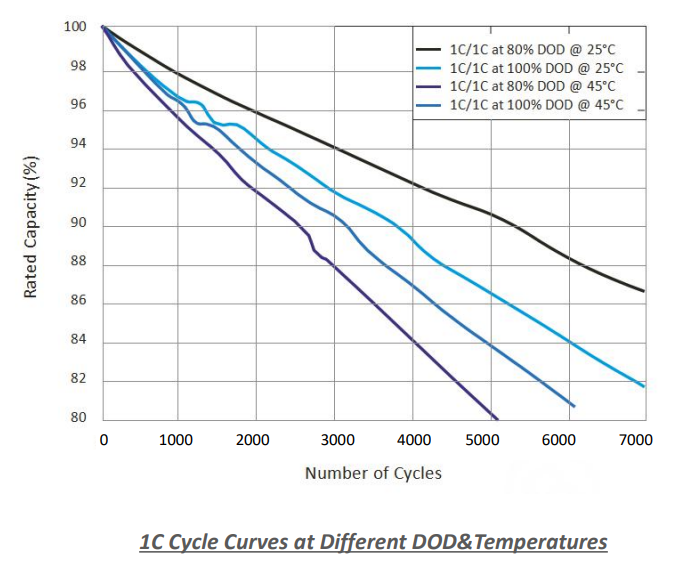
FAQs:
Are lithium battery compatible with my existing RV charging system?
In most cases, lithium battery can be used with existing RV charging systems. However, it’s recommended to consult the battery manufacturer or an expert to ensure compatibility and make any necessary adjustments.
Can I replace my lead-acid battery with a lithium battery directly?
Yes, it is possible to replace a lead-acid battery with a lithium battery. However, it’s important to consider the voltage requirements, charging system compatibility, and potential modifications needed for a successful swap.
Can I charge my RV lithium battery with solar panels?
Absolutely. Lithium battery can be charged with solar panels by connecting them to a suitable solar charge controller. This allows you to harness renewable energy to recharge your battery while off-grid.
Are lithium battery better for RVs?
Safety. Because they’re made with new LiFePO4 technology, RV lithium battery are extremely safe. That means you can travel with the comfort of knowing they’re non-combustible, can withstand harsh cold temperatures, and contain lithium ion phosphate which is not toxic.
How long do RV lithium battery last?
In the RV world, most users commonly use lead-acid battery for cost-effectiveness. Their lifespan is around 3 to 5 years. Many RV users are upgrading to lithium battery for performance and longevity. Typically, lithium battery companies provide an 8-12 year warranty lifespan.
Do you need a special charger for a lithium battery?
We encourage new Lithium battery owners to use a charger that has a Lithium specific charge profile for LiFePO4 battery. These are easy to find since most chargers on the market today have a lithium charge profile, and LiFePO4 is the predominant Lithium battery chemistry in the marketplace.
How often should I replace my RV battery?
It is recommended to replace your RV battery every 3 to 5 years or when it no longer holds a charge.
How do I maintain my RV battery?
To maintain your RV battery, you should regularly charge it, keep it clean and dry, and store it in a cool, dry place when not in use.
What should I do with my old RV battery?
It would help to recycle your old lithium-ion RV battery at a designated recycling center or return it to a retailer that accepts used battery. It is important to dispose of battery properly, as they contain toxic materials that can harm the environment.


